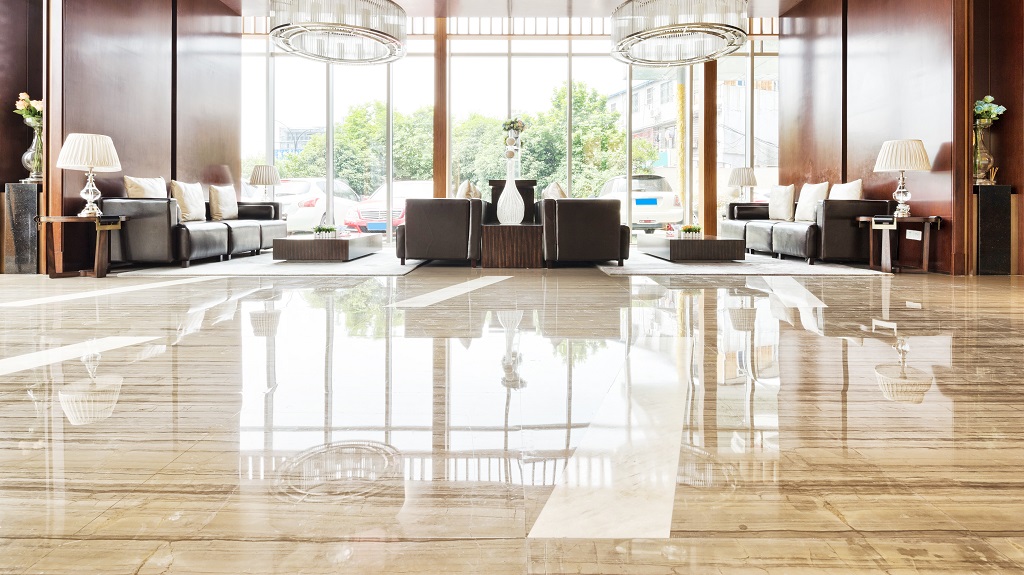Floor Grinding and Polishing Machine: How to Choose the Right One

Grinding and polishing stone floors are essential processes to enhance a floor's appearance and ensure its longevity, preserving its beauty and inherent qualities.
These processes are not only crucial but also intricate, requiring study and experience. They are necessary for both initial installation and the maintenance of already-installed and polished floors. Particularly in high-traffic areas like hotels, shopping centers, and public establishments, periodic repolishing is essential to rejuvenate the space.
First and foremost, grinding and polishing are divided into different phases, each serving a specific purpose. Additionally, various factors, such as stone characteristics and installation methods, directly influence floor quality and the choice of the most suitable grinding and polishing methods.
All these elements also impact the selection of specialized machinery, like marble floor grinders, which must be chosen carefully to ensure optimal results.
In this article, we'll delve into the grinding and polishing processes and guide you on choosing the right grinder.
Grinding and Polishing Stone Floors: How It Works
Polishing and grinding are essential operations to increase a floor's value and durability, whether it's made of marble, granite, terrazzo, or concrete. Through these processes, it's possible to eliminate marks, achieve the desired finish, and enhance the floor's appeal as a crucial furnishing element.
Grinding and polishing follow distinct phases:
Grinding involves using specific abrasive tools mounted on abrasive holding plates or planetary heads of machines. It typically comprises 5-6 steps and includes phases such as flattening/roughing and closing/finishing to achieve a smooth yet opaque surface.
Following grinding, for a brilliant final result, the process moves to polishing. This can be done through mechanical procedures or by incorporating chemical agents. Polishing comprises pre-polishing, to attain a semi-gloss, and final polishing, necessary for a shiny finish.
To execute these operations effectively, selecting the right floor sander, along with suitable abrasives and tools, is paramount. Let's explore these machines in more detail.
Grinding and polishing machines for Stone, Marble, and Granite Floors: Characteristics and Differences
Floor grinders play a crucial role in finishing processes for marble and granite floors. They are highly versatile, used not only for these materials but also for concrete, Venetian terrazzo, and similar surfaces. Additionally, they're employed for sanding new floors and refurbishing worn surfaces.
Key features that distinguish a marble sander include the type of abrasive plate, the machine's electrical power supply, and speed regulation.
Abrasive Holding Plate of the Floor Sander: Understanding the Differences
The plate, where abrasives are mounted, is critical for processing. Floor machine plates come in various types, such as:
- Cassani,
- Comma, and
- Frankfurt.
The choice depends on factors like the shape of available abrasives and user preferences rather than inherent superiority. For example, Cassani plates are prevalent in Italy and Africa, while Frankfurt plates are common in northern Europe and the USA. The selection of a plate type is primarily a matter of convenience.
In addition to traditional plates, it is possible to use a planetary head, comprising three pads, to expedite processing and improve the final result.
Electrical Power Supply of the machine for Marble, Granite, and Stone
The machine electrical power supply is an essential consideration, as it determines whether it's single-phase or three-phase powered. This choice depends on the available current at the processing location: single-phase power is typically found in residential buildings and three-phase power in industrial settings.
Adjusting the Speed of the floor grinder to the process
Floor grinders may offer fixed or variable speed for the plate rotation. Fixed-speed sanders are suitable for materials like marble, concrete, and terrazzo, while variable-speed sanders are essential for granite and hard stones.
Choosing the right floor grinding and polishing machine depends on these factors and the specifics of the intended work.
If you are looking for a floor grinding machine that meets your needs, visit the Achilli floor polishing machines page or contact us!




